► Porsche’s most focused Panamera is here
► Almost 500bhp of V8 muscle and sharper handling
► But is it still relevant now that Porsche is electrifying?
Porsche launched the new Panamera earlier this year – and it’s great. We’re rather fond of the standard car, as it manages to blend sports car driving dynamics with executive car comfort levels while making no real compromises on either end.
The brand is now steadily introducing its many and varied trim levels to the market, starting with this – the new GTS. It promises to retain all the comfort of the standard car but improve its driving experience with some sharper suspension and a more exciting V8 engine.
Now, I love a daft engine, so you can only imagine how keen I was to get behind the wheel. But I was also a little apprehensive about the GTS’s future. Folk like me are somewhat of a dying breed – and a V8-powered super saloon doesn’t seem to slot neatly into Porsche’s soon-to-be electric model range.
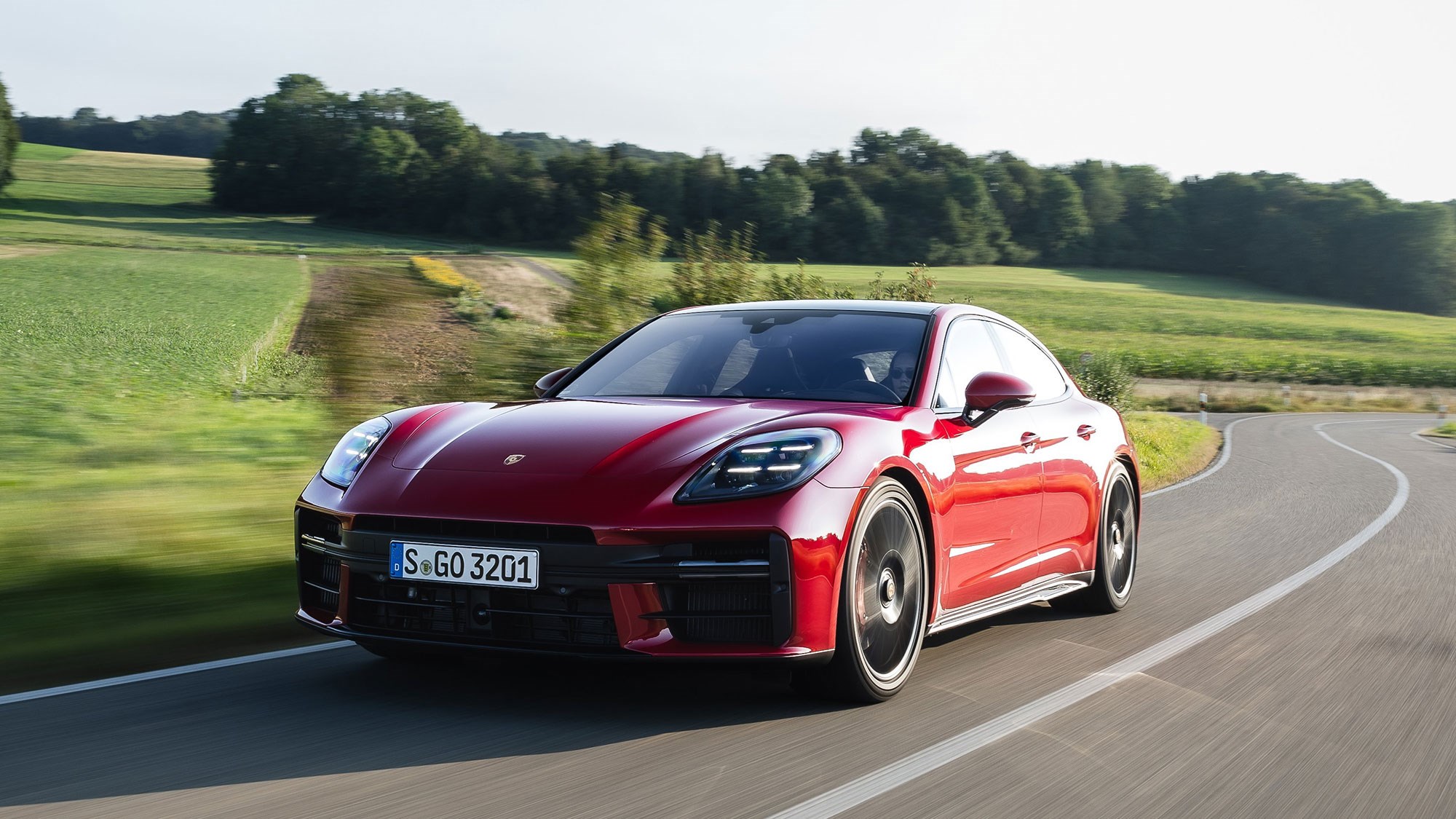
Stuttgart’s rate of change is rapid. The Macan is already an EV, the electric versions of the Boxster and Cayman are imminent and the Cayenne is expected to adopt batteries by the end of 2025. And if you want a fast and comfortable sports saloon, Porsche already has that base covered with the Taycan.
So, is the Panamera GTS still worth bothering with? Or should Porsche’s buyers try harder to move with the times and opt for one of its electric alternatives? Scroll down to find out.
At a glance
Pros: wonderful to drive, excellent ride quality, brilliant engine
Cons: Porsche’s predatory options, high fuel consumption
What’s different?
Porsche hasn’t tried to reinvent the wheel with the new Panamera. This new model is based on a heavily revised version of the old car’s MSB architecture, which is no bad thing because that chassis has always been a proper corker.
The GTS is the simplest version of the new car. It has conventional adjustable dampers (rather than the active units fitted to the Turbo S E-Hybrid model), it does without Porsche’s complicated rear-wheel steering system and it has a total lack of hybrid assistance. If you’re a keen driver, this the Panamera for you.
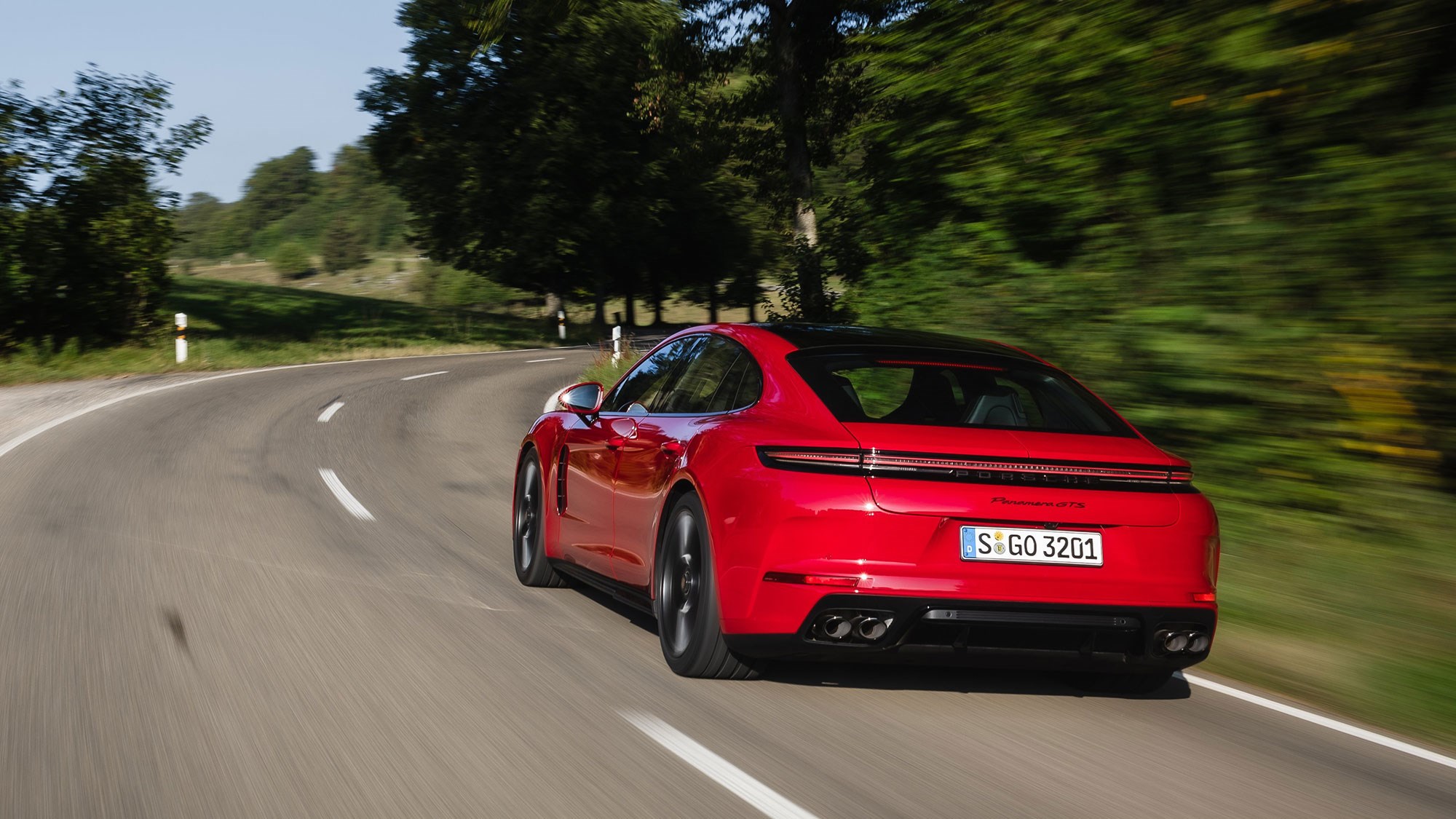
From the outside, the only obvious things that set the GTS apart from the rest of the Panamera range is a model-specific (and rather subtle) body kit, a 10mm drop in suspension height and some tiny ‘GTS’ decals on the leading edge of the front doors.
What are the specs?
The GTS has a twin-turbocharged 4.0-litre V8 engine with 493bhp and 486ft lbs of torque. That’s around 20bhp more than the previous Panamera GTS and, having driven it back-to-back with the fire-and-volt-spitting Turbo S E-Hybrid (which has almost double the amount of torque), I can confirm that’s plenty enough.
Power goes to all four wheels via Porsche’s lightning-fast eight-speed dual-clutch gearbox – and Porsche says the GTS can thrash from 0–62mph in a savage 3.8 seconds. I’ve tried the car’s launch control system and can confirm it’s as quick as the claims.
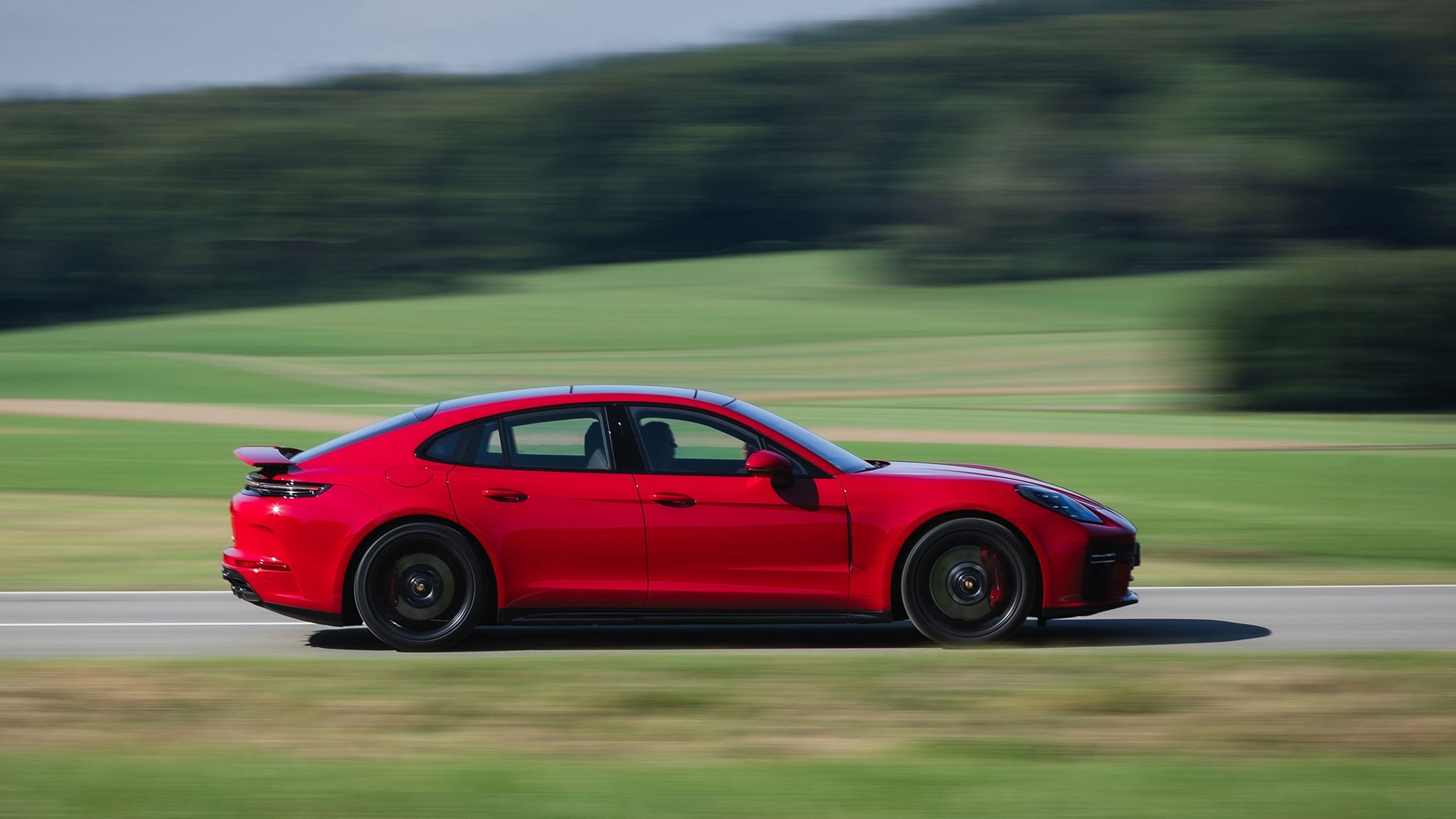
It’s more than just a traffic light dragster, though. Find a long enough stretch of derestricted autobahn and you’ll be able to hit 188mph before the GTS runs out of steam. With space for four passengers and 478 litres of luggage.
How does it drive?
Exceptionally well for something with the same footprint as a Range Rover. In GTS guise, the Panamera is nimbler and more playful than it has any right to be. Part of the reason why is because it isn’t over encumbered with technology. It only weighs a shade over two tonnes, making it 300kg lighter than the Turbo S E-Hybrid and a whopping 400kg lighter than the new plug-in hybrid powered BMW M5.
I hate to use such a well-trodden trope, but the GTS offers a far purer experience than the rest of the Panamera range, simply because your inputs flow through fewer electronic nannies before arriving at their components. That’s a good thing.
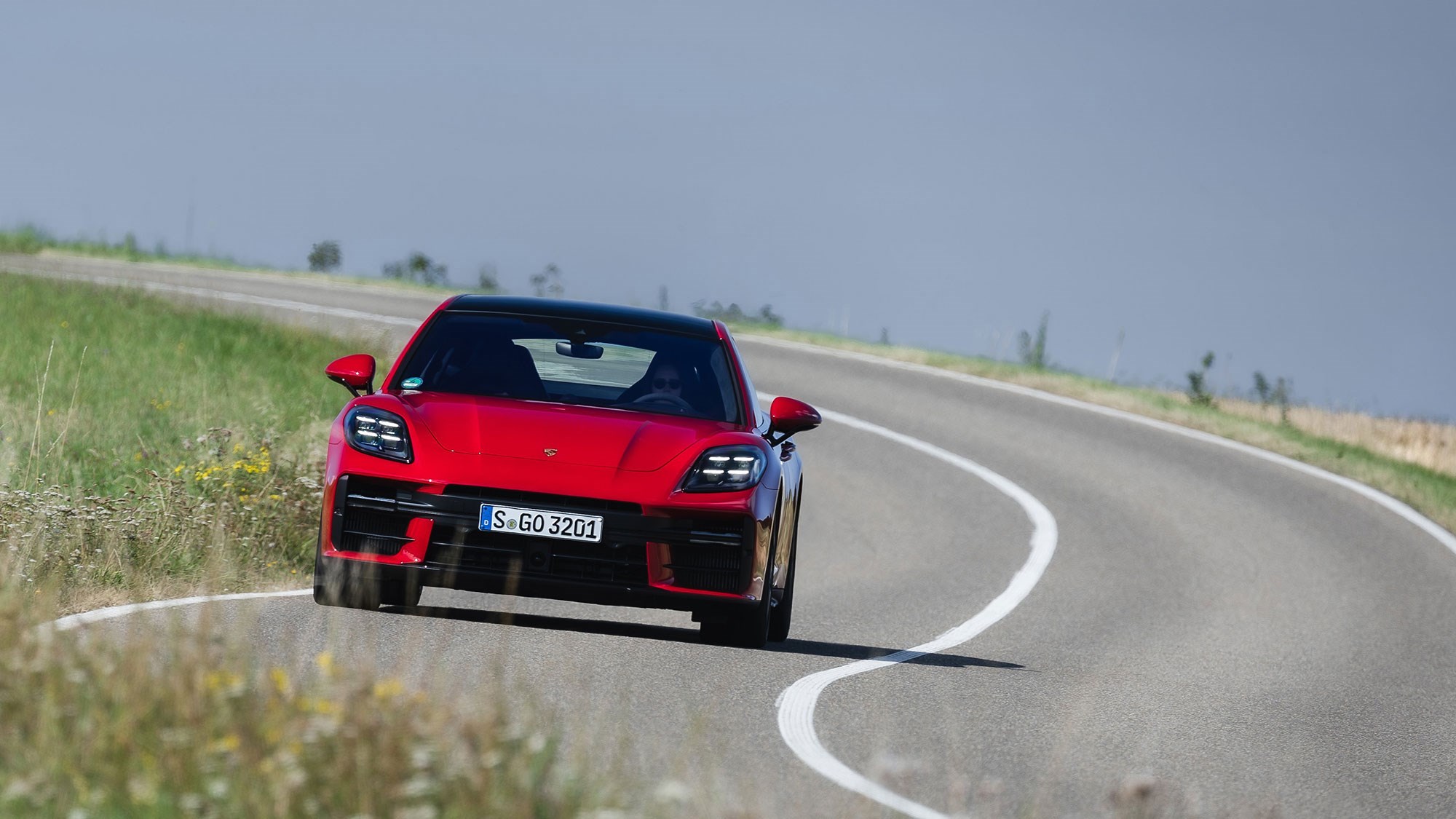
Take the suspension. The flagship Panamera features some incredibly complicated active suspension that can compensate for body roll by propping up the outside wheels in a corner. It also features rear-wheel steering that can encourage the car to turn in on sharp corners or make it more settled on sweeping motorway bends.
This tech helps to keep the body flat and the occupants comfortable, but it also makes the car feel a little unnatural to drive. As standard, the GTS only has Porsche’s basic dampers with a couple of stiffness settings. And guess what? It’s far better for it. It’s more predictable and familiar.
Team that with Porsche’s four-wheel drive system and you have the confidence to carry an obscene amount of speed into corners. I’m not an especially talented driver, but I felt like a God at the helm of the GTS, even when I was leaning on the electrical systems.
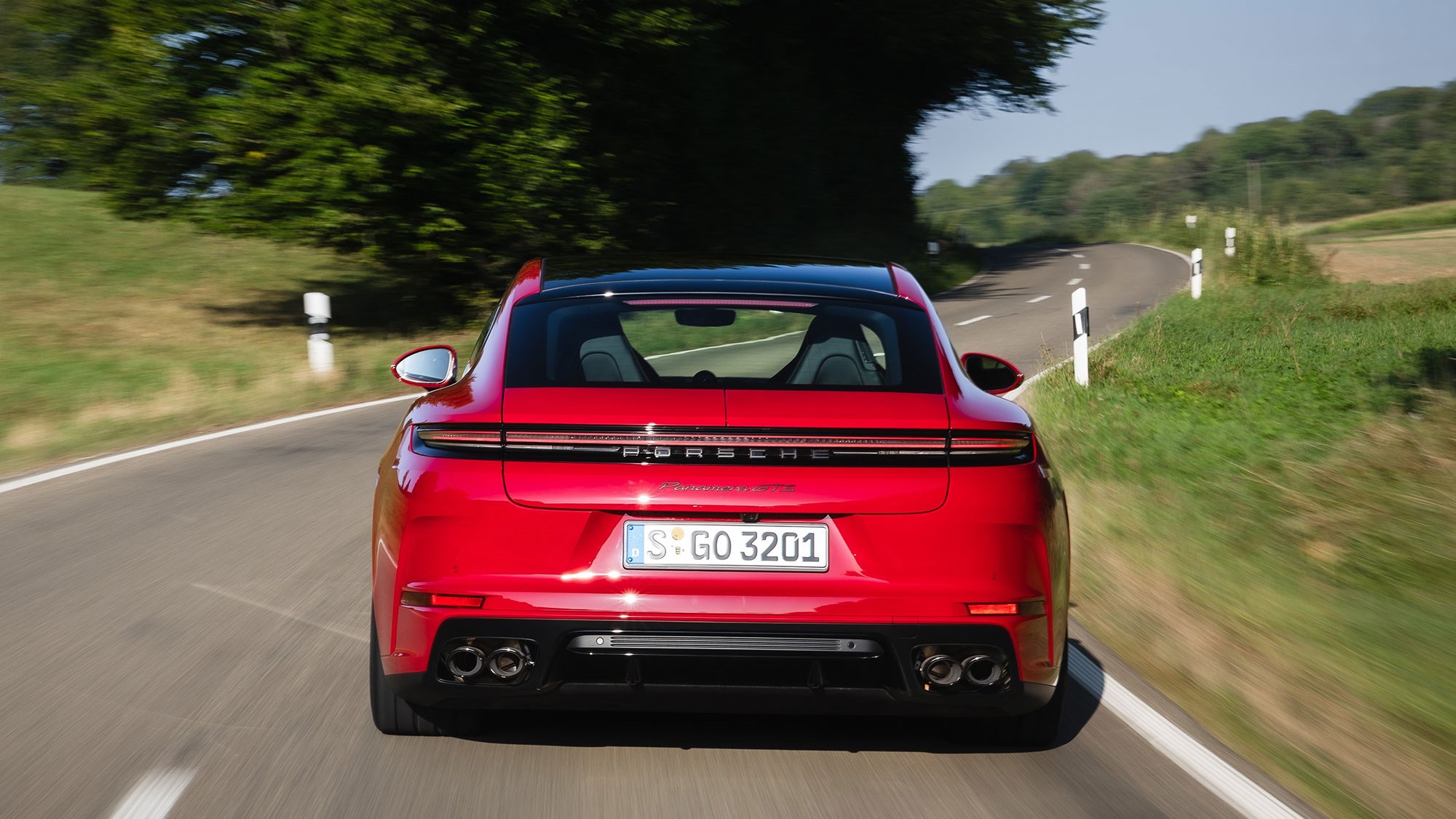
Sport Plus mode even allows for a tiny bit of slip, which I found hugely entertaining when I was matting the gas on the way out of the hairpins on my test route. The computers don’t sort everything out for you, either. It’s up to the driver to add a dab of opposite lock and keep their foot in the firewall to drag the car back into line. It’s brilliantly involving.
Speaking of which, the steering is wonderful. It’s in a completely different league to the likes of the BMW M5 and Mercedes-AMG S 63 in terms of speed and feedback. It’s like it was lifted from the 911 – it’s that good. It’s sharp off centre, it weights up well as you add lock and it’s incredibly communicative, so I didn’t have any excuse for misjudging a turn.
The brakes deserve to be celebrated for the same reason. Because they don’t also need to control a regenerative braking system, they’re responsive and predictable. The pedal is firm right at the top of its travel, which is great when you need to dab them mid-corner to help settle the chassis.
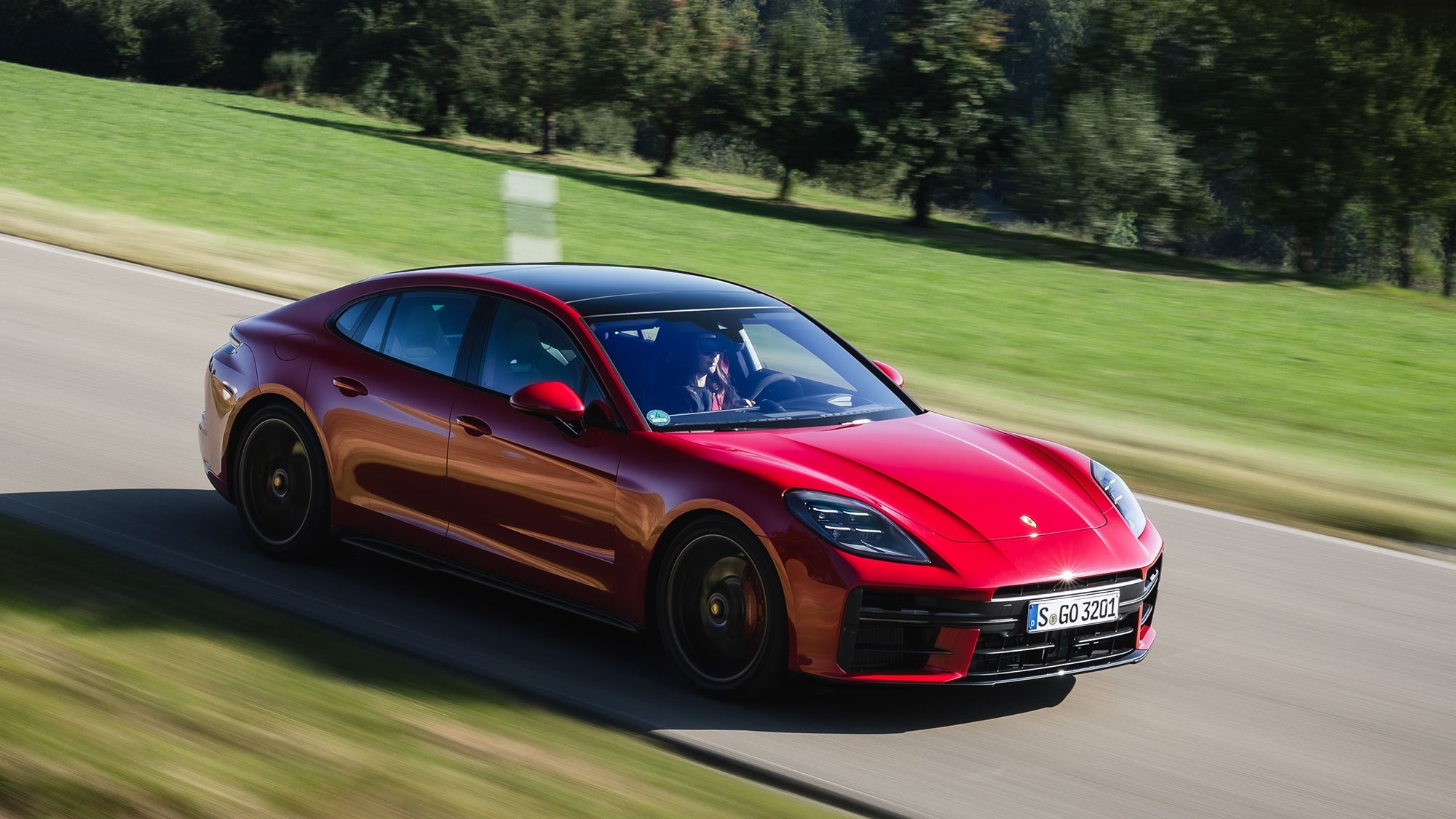
However, my test car was fitted with Porsche’s optional ceramic brakes, which are even better. They cost an extra £7,700, which is steep – but the braking performance they afford is frightening. You couldn’t stop quicker if you ran into a tree.
I wouldn’t bother with them if you only plan to use your Panamera on the street, though. You’d get much more benefit from them on the track.
What about the interior?
Just like the standard Panamera, it’s a very nice place to be. You get the same infotainment system (which is excellent), the same stunning build quality (if you ignore the delicate plastic on the centre console) and the option of having an extra screen ahead of the passenger (which is a little pointless because we all have phones).
Not much has changed over the more basic versions of the car, though – the biggest differences for the GTS are a set of more heavily bolstered sports seats and a healthy smattering of Porsche’s Race-Tex Alcantara substitute. The latter tweak does a great job of absorbing excess light, which makes the cabin feel more focused.
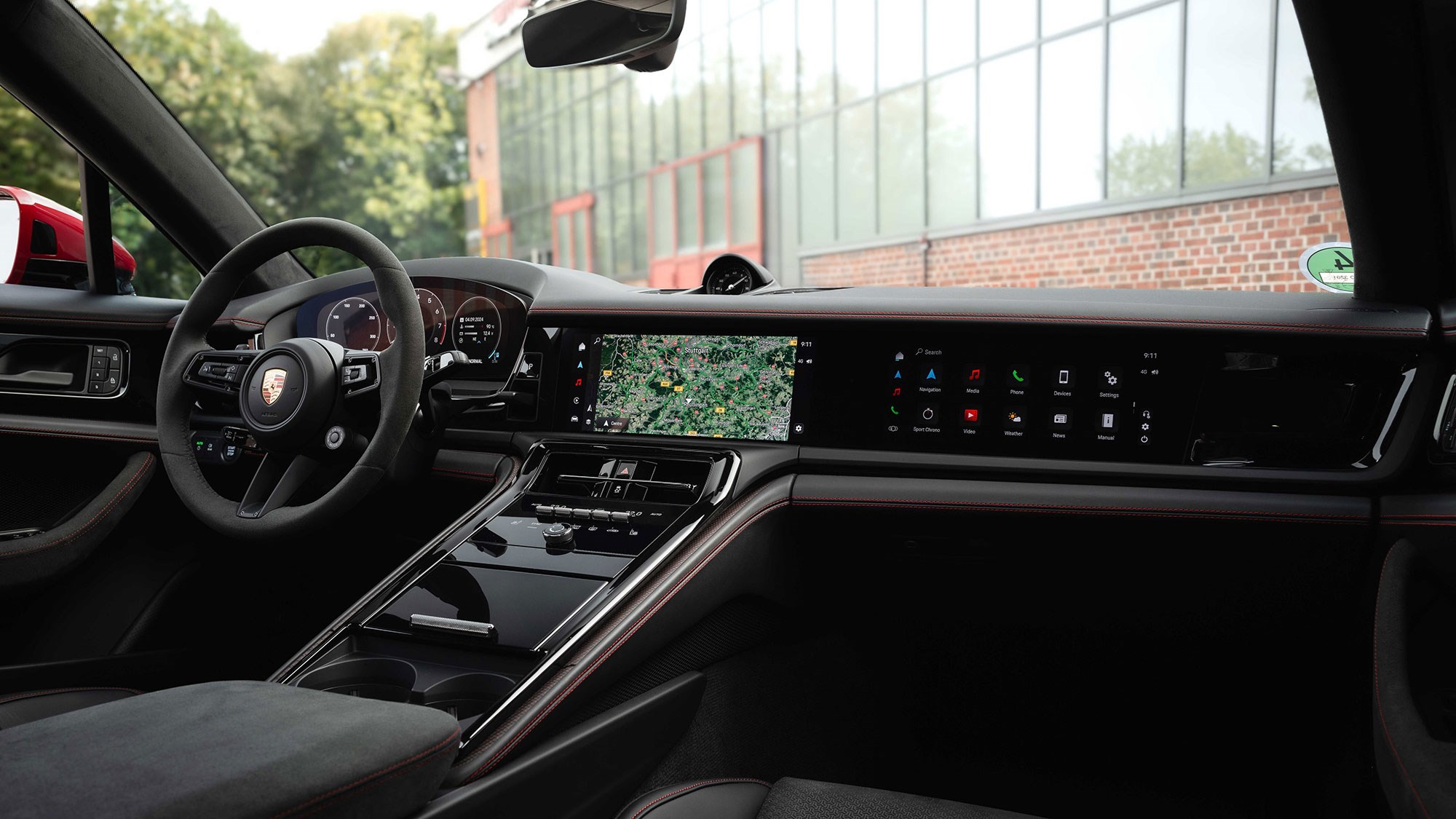
One thing worth mentioning is just how good the Panamera’s driving position is. You can set the seat on the floor if you like – and I do like because I’m tall and constantly craving cars that fit my preferred touring car driver-esque seating position.
The steering wheel comes a long way out of the dash, too, so I never found myself over-reaching for it. Even when I was hurling the wheel around on Stuttgart’s suburban switchbacks, it was always a comfortable distance away.
Verdict
My main question for this review was whether the GTS was worth bothering with now that the Taycan exists. The two cars are fighting in the same market – but the Panamera is aimed a more traditional (and increasingly unpopular) audience.
I’m old school. I like the sound of a screaming engine, and I love the mechanical sensation of driving a highly strung petrol car. So, I’d take the GTS over the Taycan every time. Hell, I’d even have the GTS over the range-topping Panamera Turbo S E-Hybrid, just to rid myself of the invasive electrical assistance. It taints the experience.
I’m concerned there’ll be lots of buyers who won’t share my opinion, though – and it’s easy to see why. It’s hard not to be bowled over by the power and comfort offered by Porsche’s electric cars. I’d driven the Taycan and the new Macan and they were both savagely fast, exceptionally refined vehucles. Cheaper to run, too.
But now’s not the time to buy an EV. We’ve got the rest our lives to explore the merits of EV tech, whereas cars like the Panamera GTS will be dead when the next decade rolls around. So, enjoy them now before legislation euthanises them and you miss your chance. Porsche’s fast saloons aren’t ever going to get more exciting than this.